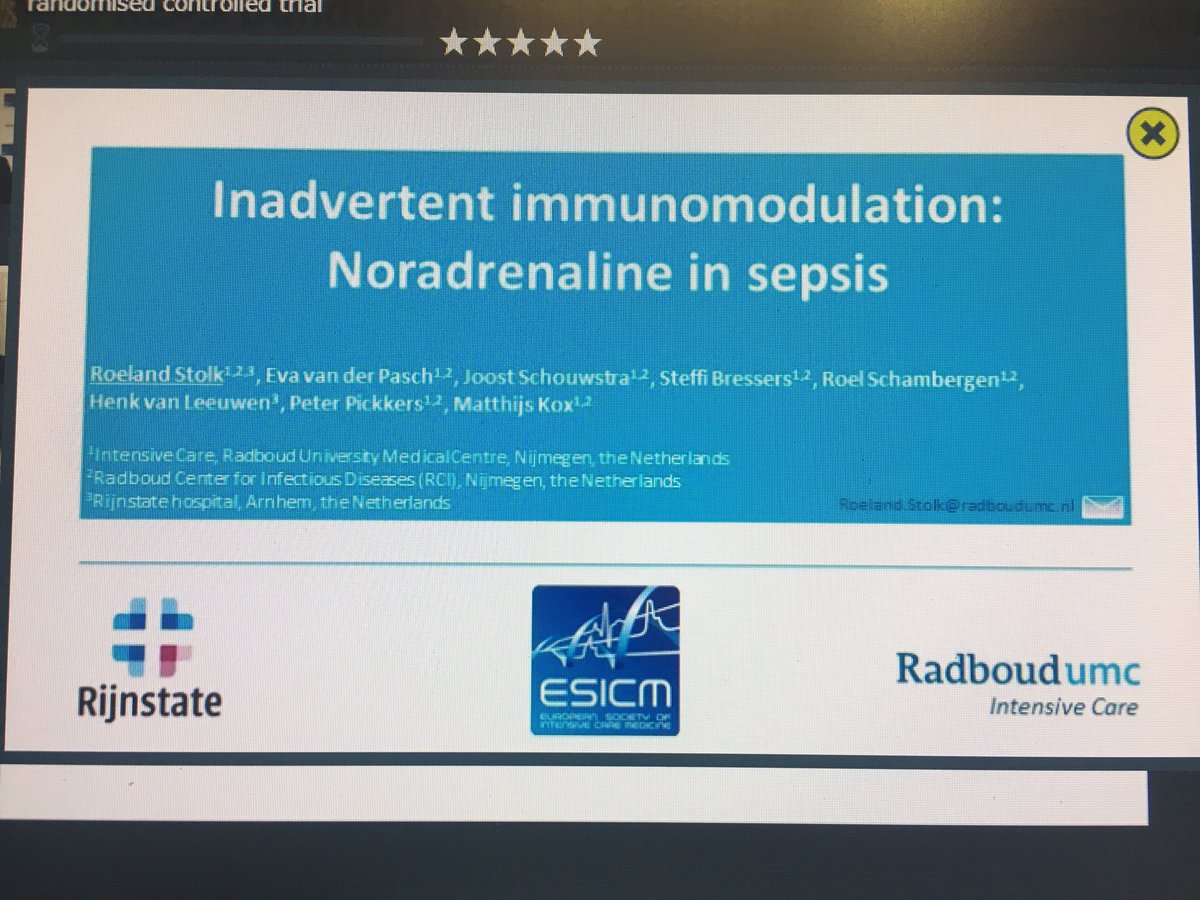Abstract Winning Session #lives2018 @ESICM great to see high quality research from our younger members 

very important research question: what is best in OOHCA? Low normal or high normal CO2?
and we carry on with Sophie Dhaese from Ghent. another important research question on sbx targets concentrations 

and last but not least Pierre Kalfon presenting very important patient centred outcome such as pain in ICU survivors 

• • •
Missing some Tweet in this thread? You can try to
force a refresh











